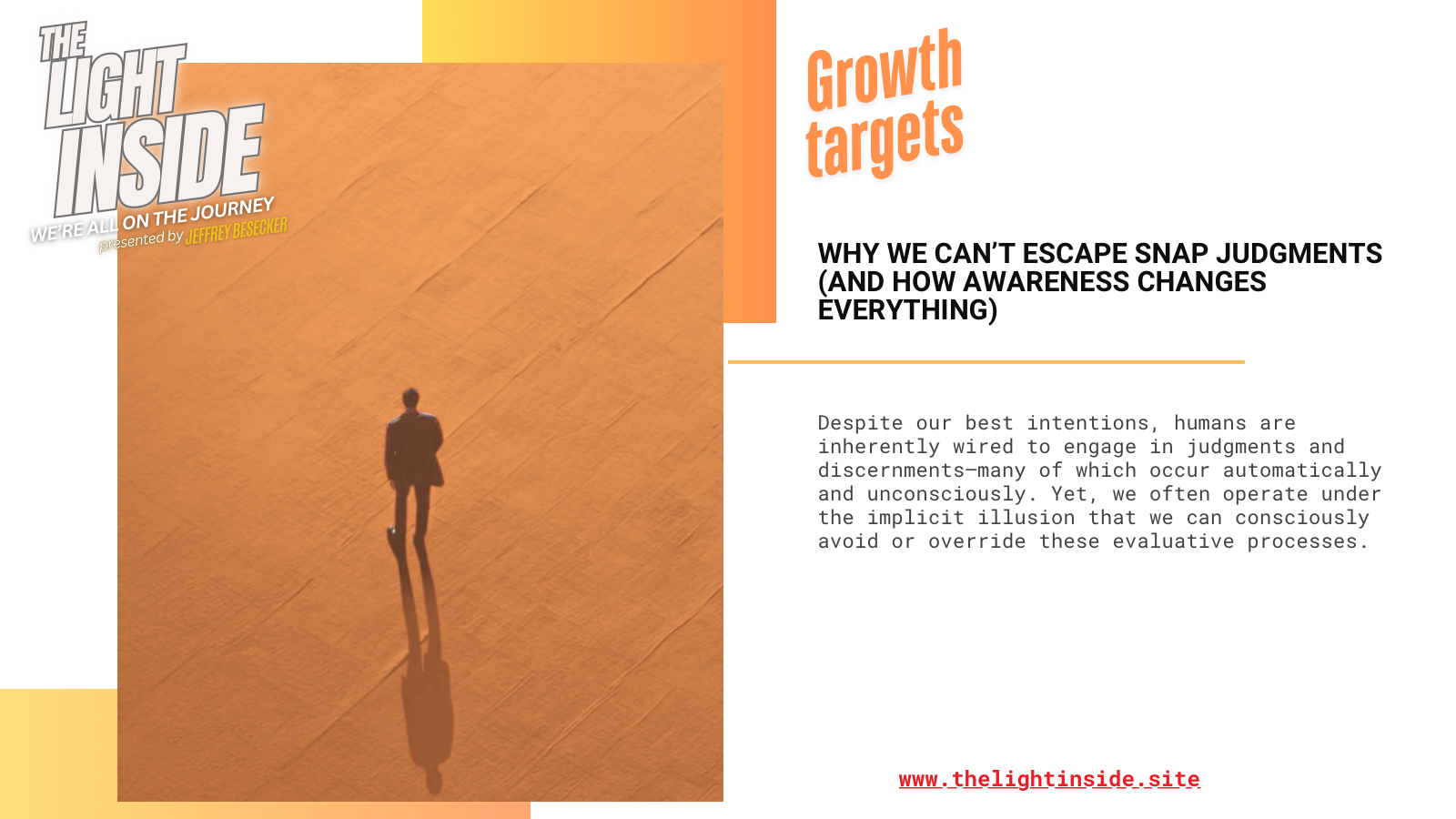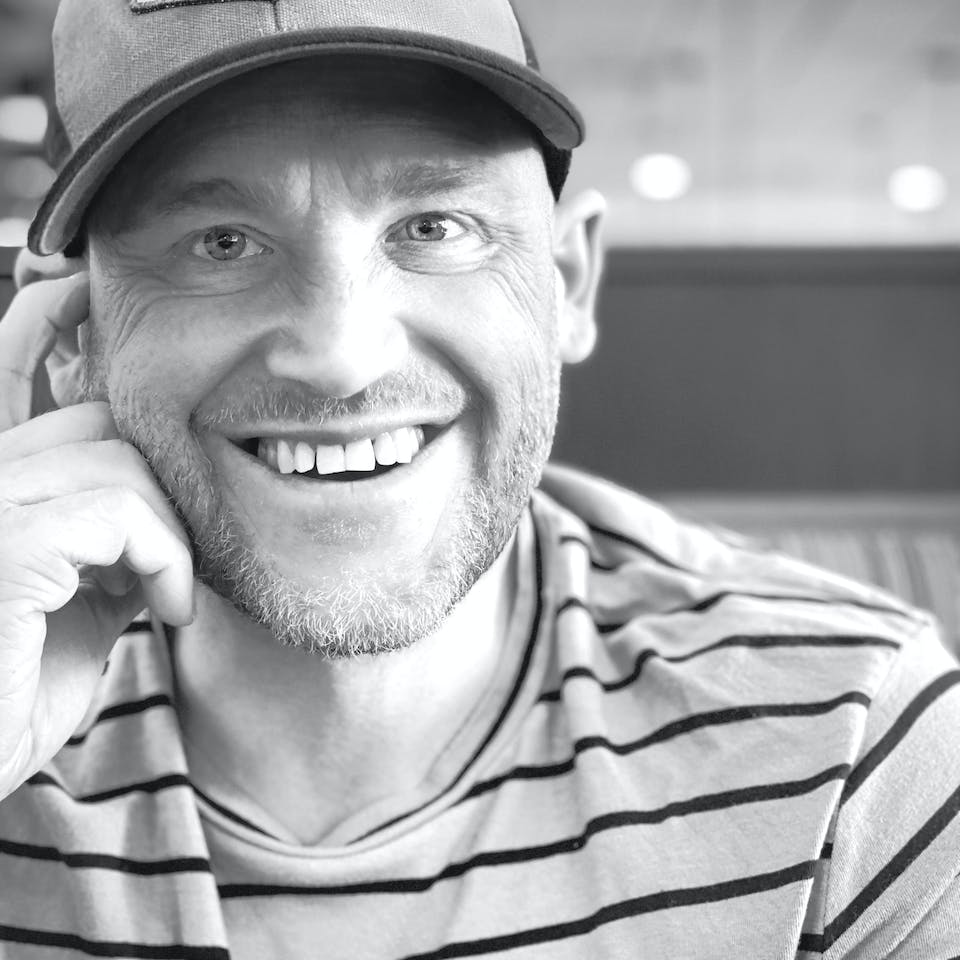Why We Can’t Escape Snap Judgments (And How Awareness Changes Everything)


Why We Can’t Escape Snap Judgments (And How Awareness Changes Everything)
Snap judgements: as humans, are they inevitable and unavoidable?
We like to think of ourselves as rational, objective beings—capable of rising above snap judgments, unconscious biases, and emotional distortions. But the reality is far more complex.
Plain as the nose on our face— yet we try to deny that they naturally exist.
Beneath our conscious awareness, a web of subconscious patterns, defense mechanisms, and cognitive biases quietly shape how we perceive, evaluate, and respond to the world.
This disconnect between our internal narratives and our automatic responses often triggers meta-cognitive dissonanceand somatic incoherence—activating ego defenses and emotional filters that reinforce self-denial, biases, and faulty heuristics in how we interpret ourselves and others.
This post explores the deeper psychological structures—like epistemic denial, introspective illusion, and motivated ignorance—that keep us from recognizing the automatic nature of human judgment. By understanding these hidden dynamics, we can begin to close the empathy gap between how we think we think and how our bodies truly operate.
Hot and Cold Empathy Gaps and Emotional Hyper Arousal
The hot-cold empathy gap is a cognitive bias where people struggle to understand how their current emotional state (either "hot" or "cold") influences their preferences and behaviors, and how it might affect others in different emotional states. In simpler terms, it's a difficulty in understanding how someone's emotions, either intensely felt or absent, can impact their decisions and perceptions.
Here's a more detailed explanation
Understanding "Hot" and "Cold" States:
- "Hot" states: are characterized by strong emotions, physical sensations, or strong drives, like hunger, anger, or pain.
- "Cold" states: are more neutral, rational, and less emotionally driven.
The Gap:
The empathy gap arises when people in a "cold" state underestimate the influence of "hot" states on themselves or others. Conversely, people in a "hot" state might overestimate the stability of their current preferences and underestimate the influence of "hot" emotions on their behavior.
Examples:
- In a cold state: A person might plan a healthy diet for the next day, assuming they will easily resist unhealthy cravings when hungry. However, when hungry, they might succumb to those cravings due to the "hot" state of hunger.
- In a hot state: A person experiencing intense anger might not fully understand how their anger is affecting their communication or actions, and may underestimate how their anger might be perceived by someone in a calmer state.
Consequences:
The hot-cold empathy gap can lead to poor decision-making in various situations, including:
- Medical decisions: .People might make impulsive decisions about medical treatments when they are in pain or discomfort, or they might underestimate the pain of others when they are not experiencing it.
- Addiction: .Addicts might underestimate the intensity of cravings and the difficulty of resisting them when in a "cold" state.
- Everyday choices: . People might make poor choices about what to eat, how much to spend, or how to react to situations based on their current emotional state.
Reintegrating the Gap:
While it's challenging to completely eliminate the hot-cold empathy gap, awareness and strategies can help mitigate its effects:
- Planning in a cold state: When in a rational, calm state, anticipate potential "hot" states and create strategies to manage them.
- Preparing for difficult situations: Think ahead about how you might feel and behave in challenging emotional situations.
- Seeking feedback: Ask for feedback from others about your behavior, especially in emotionally charged situations.
We spend much of our lives believing we're the authors of our thoughts—yet beneath the surface, unseen somatic patterns make judgments long before we’re aware a decision was made.
Despite our best intentions, humans are inherently wired to engage in judgments and discernments—many of which occur automatically and unconsciously. Yet, we often operate under the implicit illusion that we can consciously avoid or override these evaluative processes.
If our minds AND bodies are constantly making judgments before we’re even aware they’ve begun—how much of our “rational” thinking is just a defense against admitting we’re not fully in control?
This belief reflects a form of epistemic denial, where we resist acknowledging the inevitability of snap appraisals, implicit biases, and heuristic thinking. Research by Nisbett and Wilson (1977) on the introspective illusion demonstrated that individuals frequently misattribute the causes of their judgments, highlighting how limited our access is to the unconscious processes driving perception and decision-making.
Similarly, Kahneman’s (2011) work on System 1 and System 2 thinking emphasizes that most of our judgments are fast, automatic, and emotionally colored—despite our belief in the dominance of rational deliberation.
The behavioral patterns described here—where someone denies or avoids acknowledging the inevitability of default human judgments (such as snap appraisals, implicit biases, or automatic heuristics)—go beyond simple conflation or confabulation.
These patterns often manifest as defense mechanisms or cognitive distortions aimed at preserving a fragile or idealized sense of self, the illusion of control, or rationality.
No matter how hard we try to override them, judgments arise unbidden—and denying their presence only deepens the dissonance between who we believe we are and how the mind actually works.
Several conceptual frameworks may describe this kind of behavior. Here's a breakdown of some of the most relevant terms:
🧠 1. Epistemic Denial
A refusal to accept or integrate uncomfortable truths about how cognition naturally works—especially our reliance on heuristics and biases. This may include:
Naïve realism: Belief that we see the world objectively, and those who disagree are uninformed, irrational, or biased.
Epistemic ego-defense: Avoiding knowledge that threatens one's self-concept or worldview.
Cognitive idealism: Overestimating one's rationality and underestimating unconscious or emotional influences.
2. Psychological Defenses (esp. Intellectualization & Reaction Formation)
Over-Intellectualization: Using abstract or rational explanations to avoid acknowledging uncomfortable emotional or unconscious truths—such as the reality of automatic judgment.
Reaction formation: Adopting an opposite stance to an unacceptable thought (e.g., insisting on pure objectivity while unconsciously operating from bias).
3. Metacognitive Blindness / Introspective Illusion
This refers to the mistaken belief that one can fully introspect the causes of one’s judgments and behaviors, while ignoring the automaticity of cognitive processes. This includes:
- Overconfidence bias in one’s self-awareness.
False transparency: Assuming one's motives are visible or obvious to others (or even to oneself).
Disavowal of system 1 processing (per Kahneman): Pretending all judgments arise from slow, deliberate thought.
🚧 4. Motivated Ignorance / Willful Blindness
A kind of motivated reasoning where one selectively avoids, suppresses, or rationalizes evidence of cognitive shortcuts like implicit bias or judgmental heuristics.
- This is especially common when acknowledging those realities threatens moral identity or social self-image.
5. Ego-Dystonic Moral Idealism
Holding rigid ideals of fairness, rationality, or morality that are in conflict with the ego’s natural, judgmental instincts—resulting in denial or repression of default human tendencies. This can show up as:
Moral superiority complex: Denial of one’s own bias while judging others for theirs.
Idealized self-concept: Resisting any suggestion that judgments are automatic or unconscious.
6. Defensive Rationalism
Using logic or reason as a shield to deny the role of unconscious pattern recognition, somatic responses, or emotional reasoning. This is a subtype of cognitive rigidity that often accompanies perfectionism or anxiety.
Related concepts:
Affective forecasting as an emotional and somatic bedrock.
Cognitive conservatism: Resistance to revising existing beliefs or assumptions, especially about the self.
Denial of fallibility: The implicit refusal to acknowledge that error, faults, bias, or misjudgment are inevitable.
Meta-cognitive dissonance: Conflict arising when we realize our self-image as “rational” is inconsistent with our actual cognitive processes.
Curious how this plays out?
Here’s a draft framework/taxonomy for understanding these subconscious defense mechanisms and cognitive biases, organized by their function, psychological layer, and behavioral expression. This structure is designed to integrate smoothly with your work on primary and secondary subconscious/unconscious patterns and epistemic frameworks:
Taxonomy of Subconscious Epistemic Defenses and Cognitive Distortions
I. Core Psychological Functions
These represent the why behind the pattern — the subconscious motive or need being protected.

II. Psychological Layers of Operation
Understanding where the distortion operates helps align it with therapeutic or cognitive interventions.

III. Behavioral Expressions
These highlight how these patterns manifest in cognition, speech, and interaction.

🧠 Integration with Subconscious Patterning
This taxonomy helps bridge:
Primary unconscious drives (e.g., fear of unworthiness → moral idealism)
Secondary coping adaptations (e.g., perfectionism → defensive rationalism)
Epistemic distortions that obscure self-awareness (e.g., introspective illusion)
These patterns often arise as compensatory constructs when core ego narratives or identity roles are challenged — especially under social threat, emotional vulnerability, or exposure to conflicting belief systems.
Conclusive Summary
Ultimately, confronting the inevitability of automatic judgments doesn’t make us less rational—it makes us more self-aware.
By shedding light on the cognitive distortions and defense mechanisms that obscure our perception, we open the door to deeper humility, more honest self-reflection, and a more grounded understanding of our shared humanity.
Emotional capacity and true growth begins not by denying our unconscious tendencies, but by learning how to relate to them with clarity, compassion, and curiosity—reintegrating thus suppressed and unresolved psychological and somatic data.
By recognizing and working through our rigid authenticity biases, we begin to accept a more adaptive and compassionate truth—one that honors both our unconscious patterns and our capacity for growth.
💡 Coachable Moment: The goal isn’t to eliminate snap judgments or unconscious reactions—but to build awareness of them and respond with intention rather than avoidance.
🔄 Call to Action: Start by noticing when you feel the urge to defend your perspective as the “rational” or “authentic” one.
Ask yourself: What might I be protecting? That small moment of pause can be the opening to a deeper, more flexible self-understanding.





